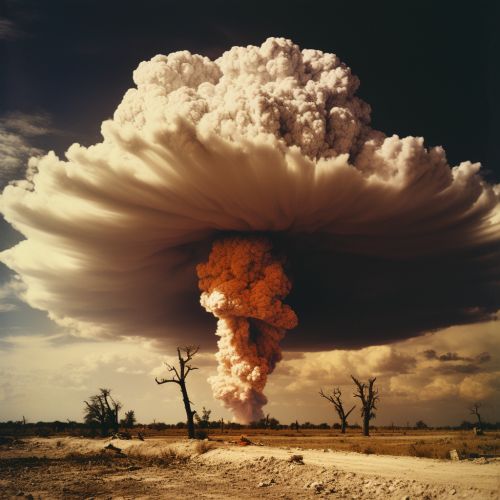Fission bomb
Introduction
A fission bomb, also known as an atomic bomb or A-bomb, is a type of nuclear weapon that uses nuclear fission to generate a large amount of energy in the form of an explosion. The energy is released when the nucleus of a heavy atom, such as uranium-235 or plutonium-239, is split into two or more smaller nuclei. This process, known as nuclear fission, releases a large amount of energy in the form of kinetic energy and gamma radiation.


History
The concept of a fission bomb was first proposed in the 1930s, following the discovery of nuclear fission by German physicists Otto Hahn and Fritz Strassmann. The idea was further developed during World War II as part of the Manhattan Project, a secret research project conducted by the United States with the goal of developing the first nuclear weapons.
Design and Operation
A fission bomb consists of a core of fissile material, a device to initiate the fission reaction, and a casing to contain the reaction and direct the energy release. The core is typically made of a heavy isotope such as uranium-235 or plutonium-239, which can undergo fission when struck by a neutron.
The initiation device, or neutron initiator, is a small amount of a substance that emits neutrons when it is compressed by a conventional explosive. The neutrons cause the fissile material in the core to undergo fission, releasing more neutrons and causing a chain reaction.
The casing of the bomb serves to contain the fission reaction and direct the energy release. It is typically made of a dense material such as lead or steel, which can absorb some of the neutrons and prevent them from escaping, thereby increasing the efficiency of the bomb.
Effects and Uses
The explosion of a fission bomb releases a large amount of energy in the form of a shock wave, heat, and radiation. The shock wave can cause extensive damage to buildings and other structures, while the heat can ignite fires and cause burns. The radiation can cause immediate illness and death, as well as long-term health effects such as cancer.
Fission bombs have been used in warfare, most notably in the atomic bombings of Hiroshima and Nagasaki by the United States during World War II. They have also been used in nuclear tests, and they serve as the primary or secondary stage in most types of thermonuclear weapons.
